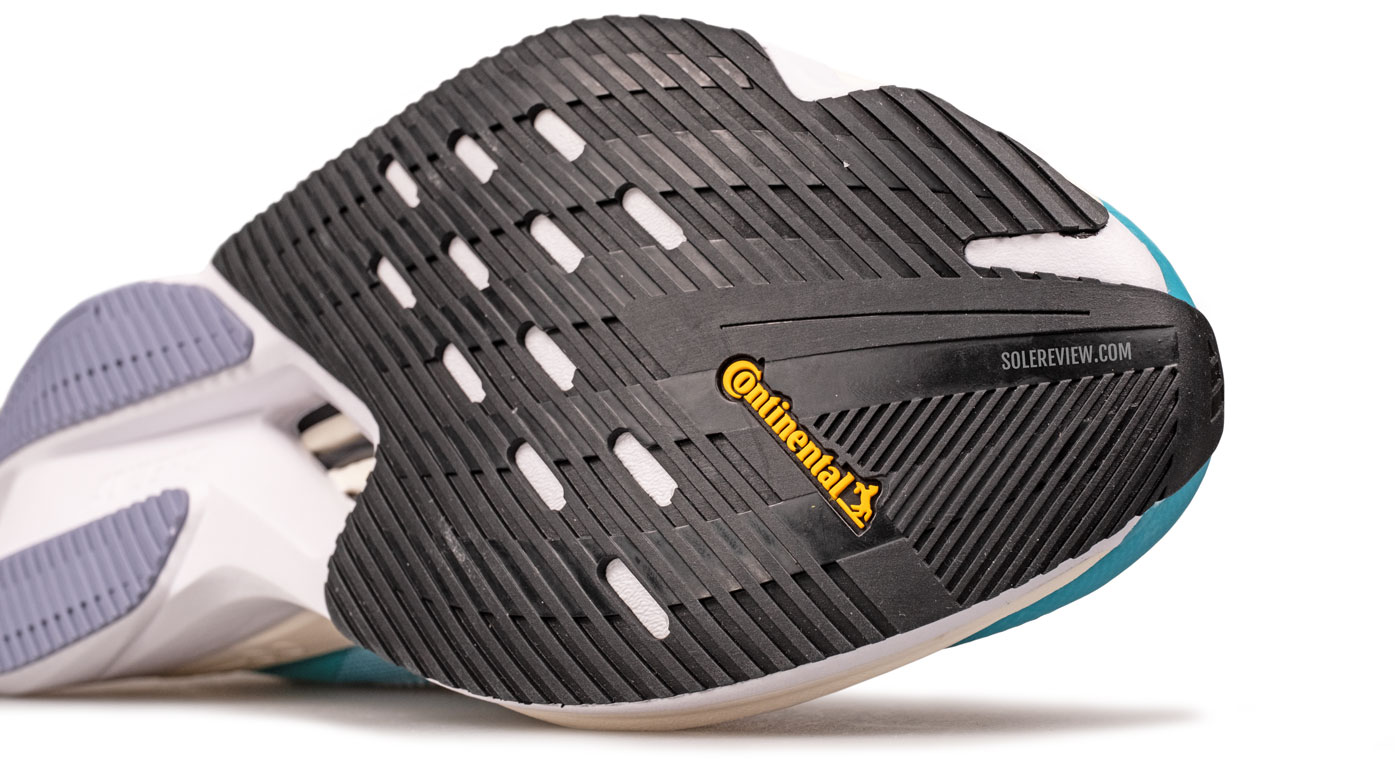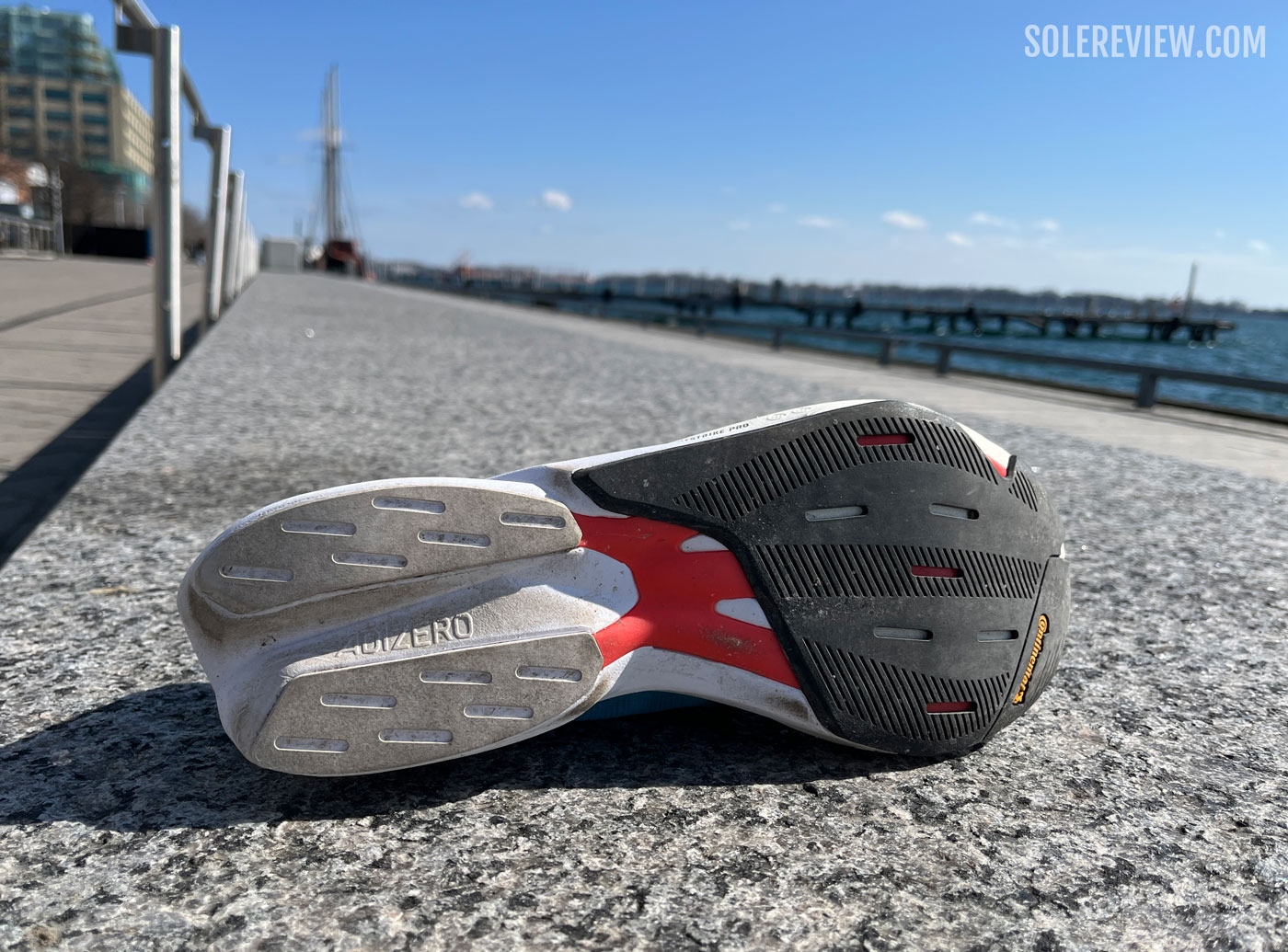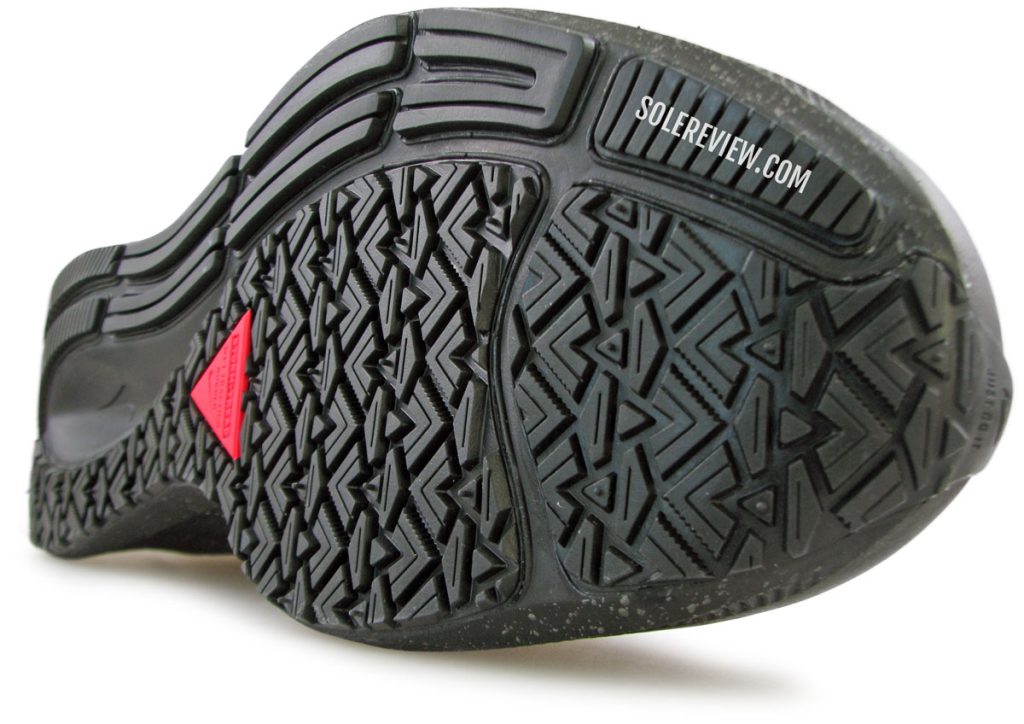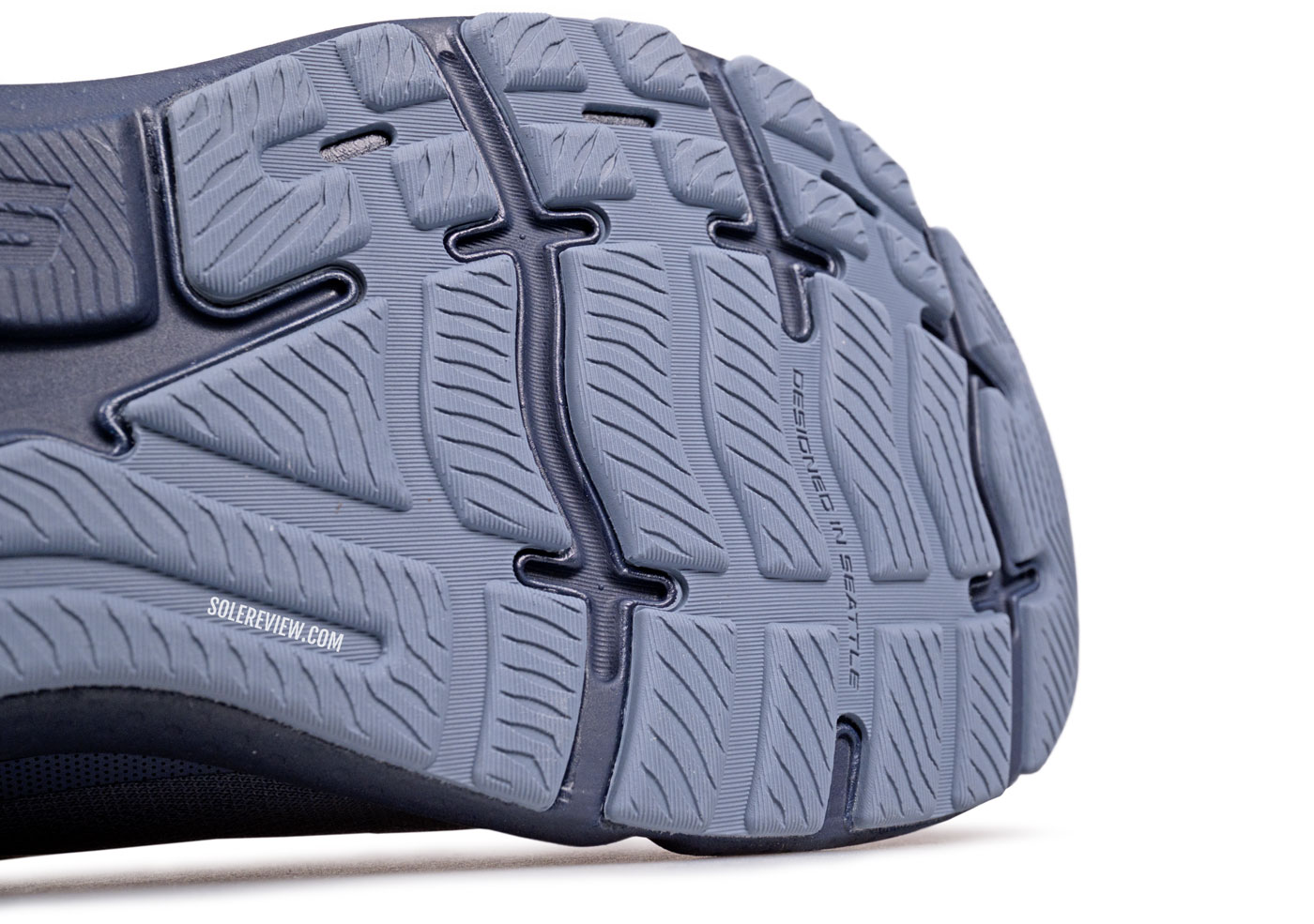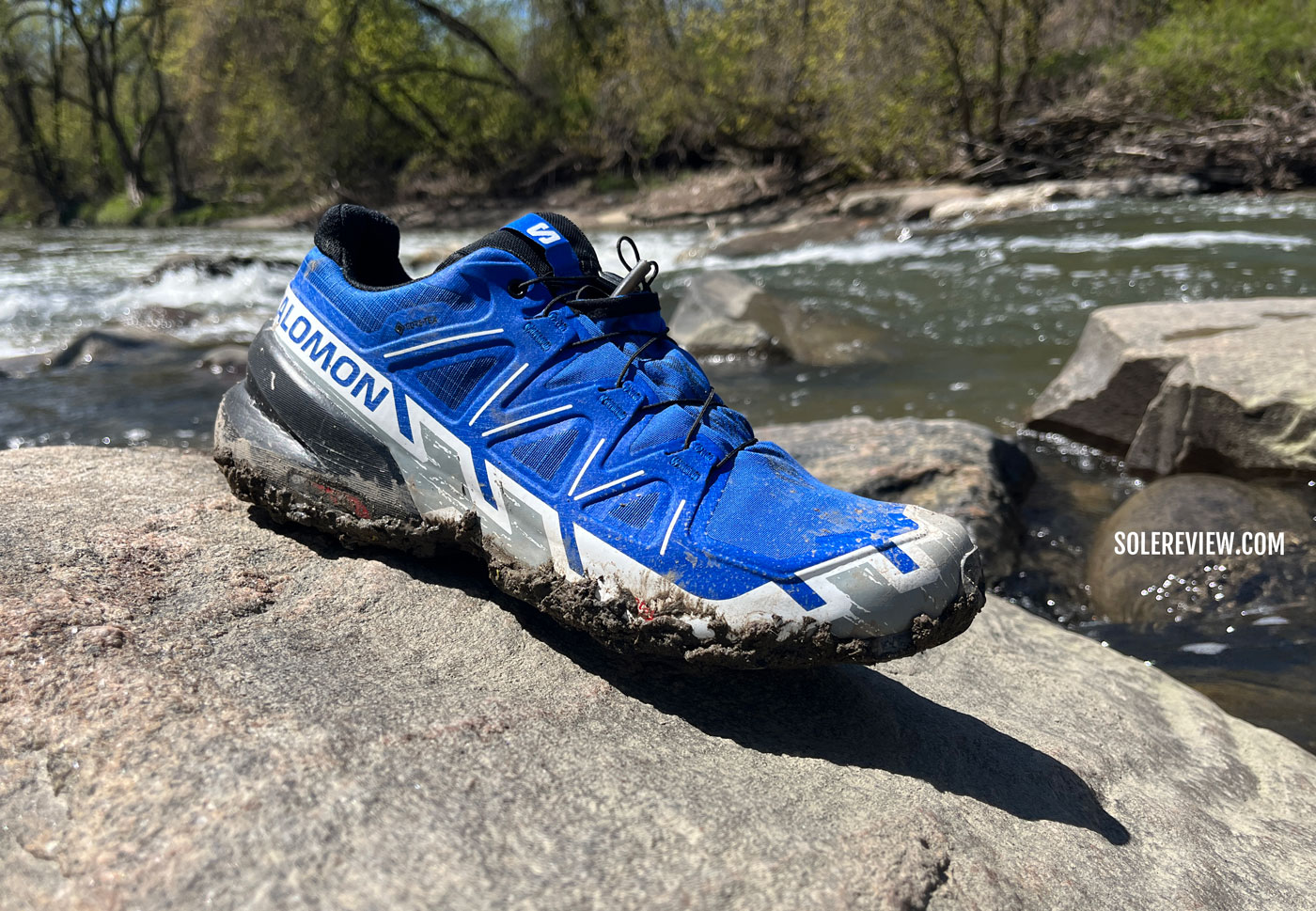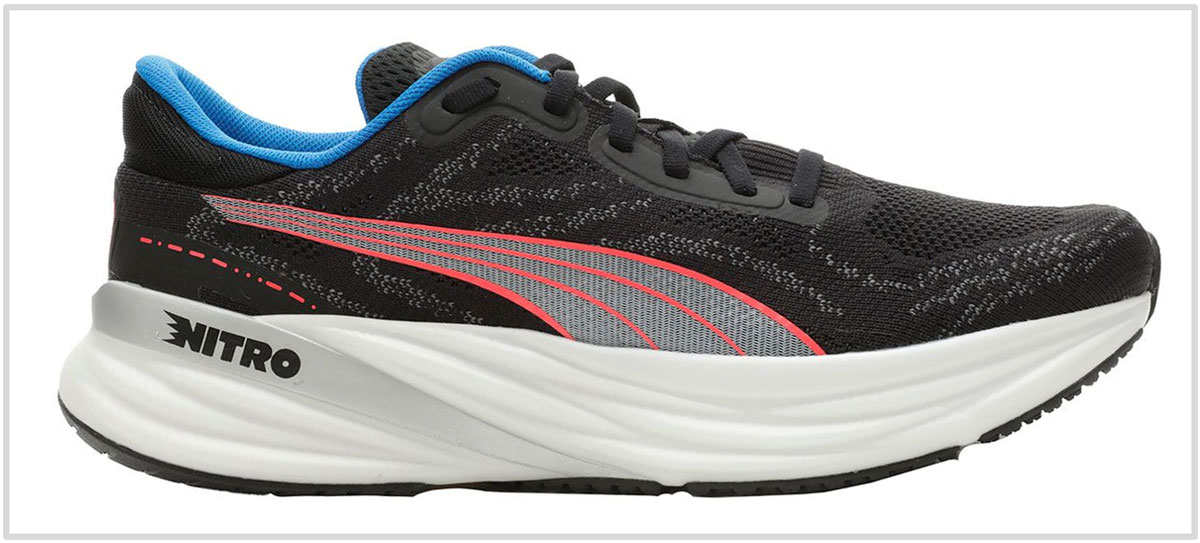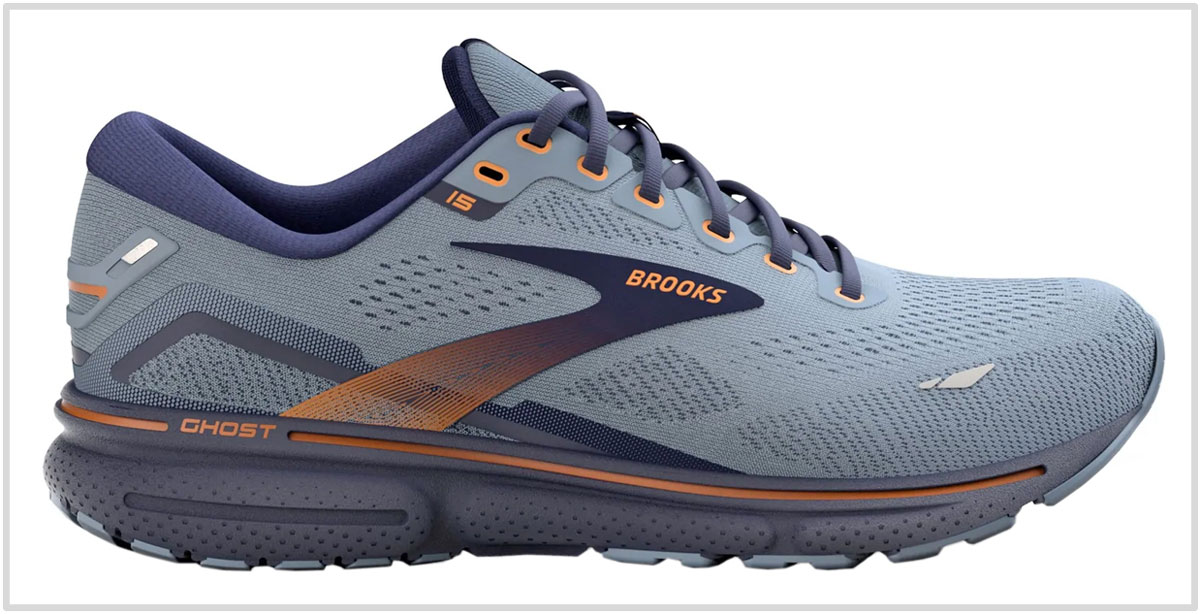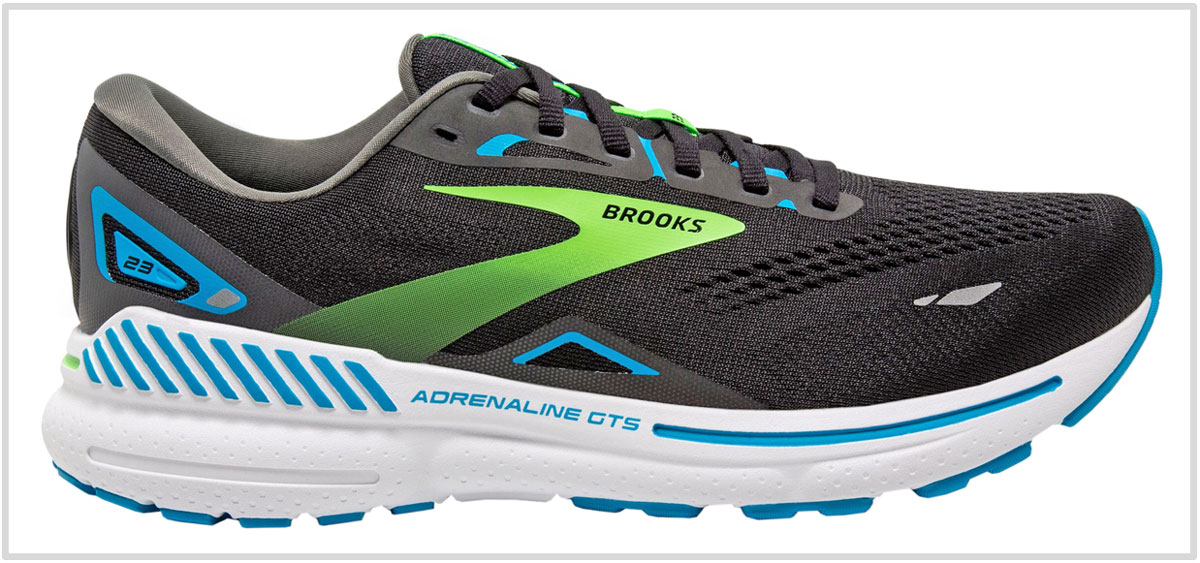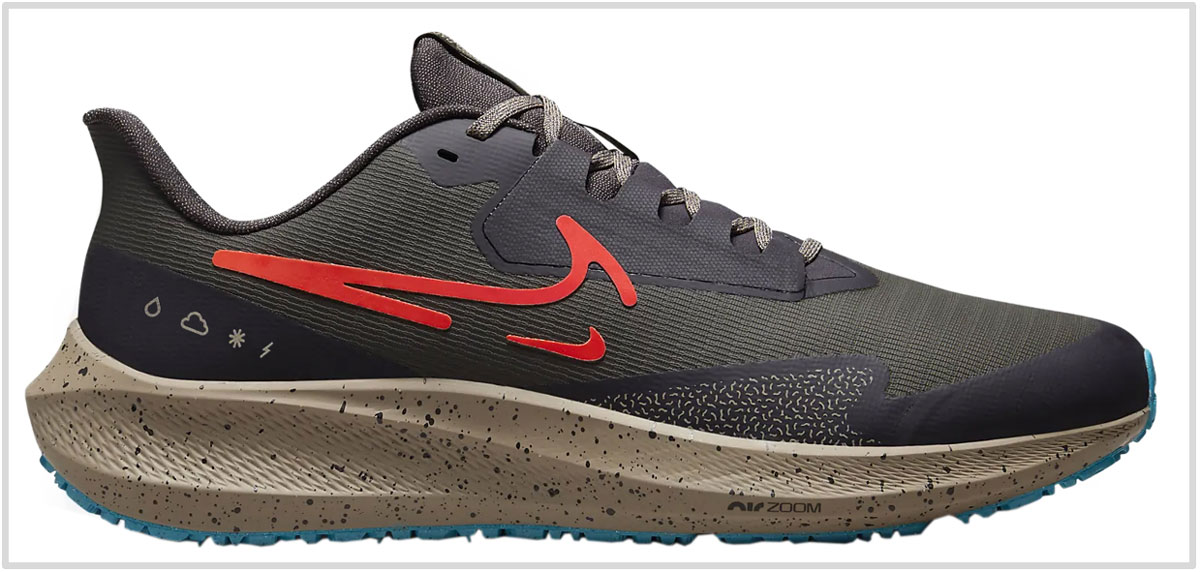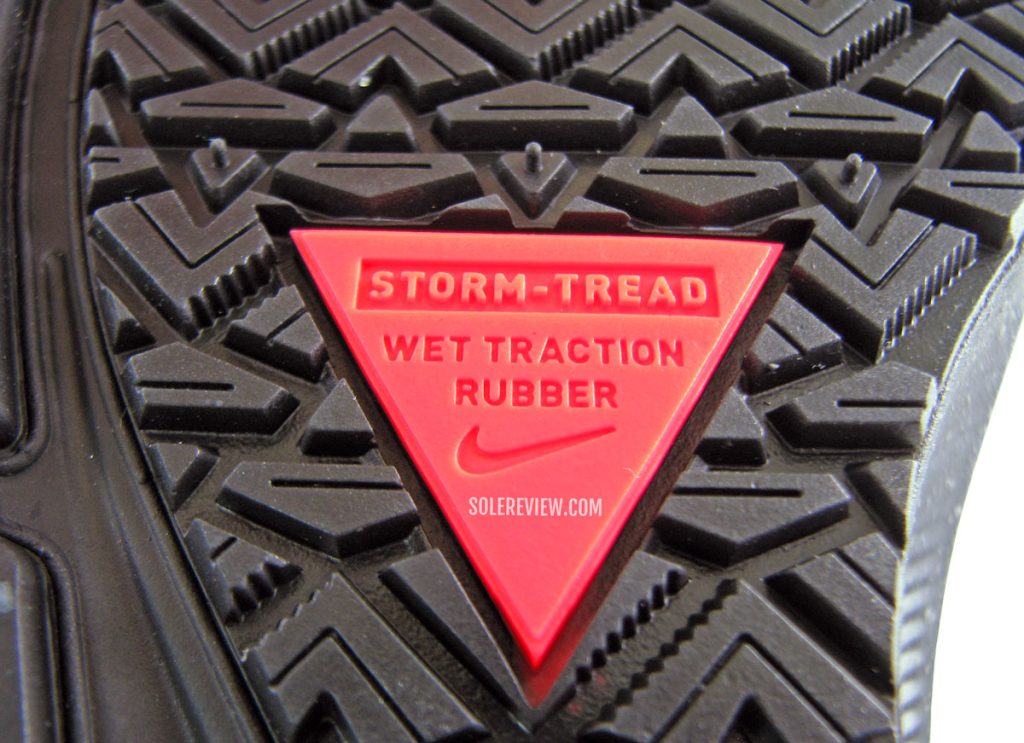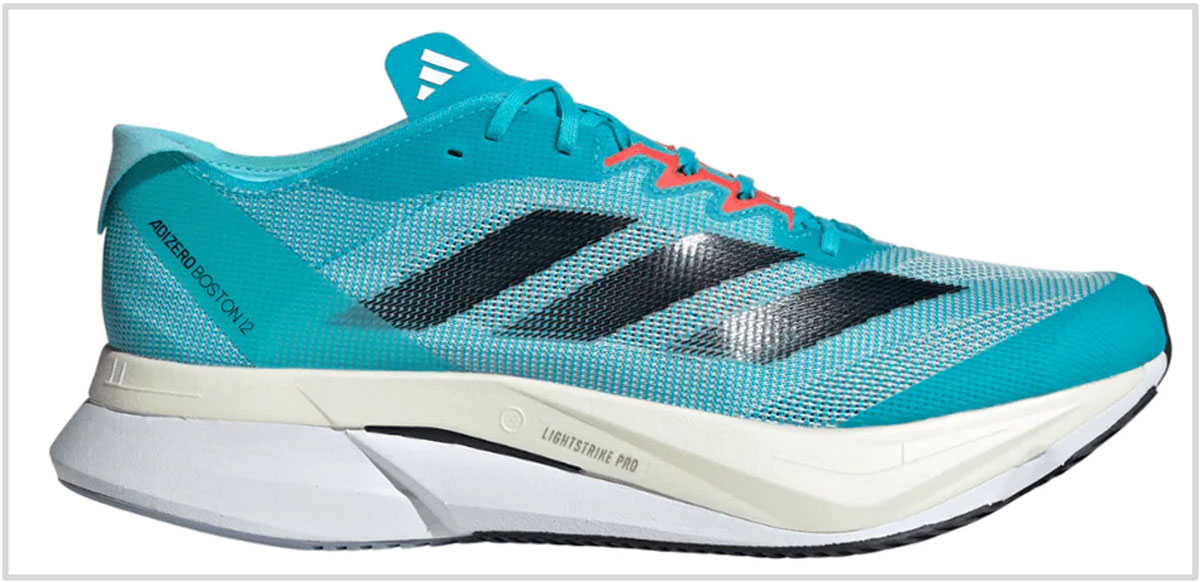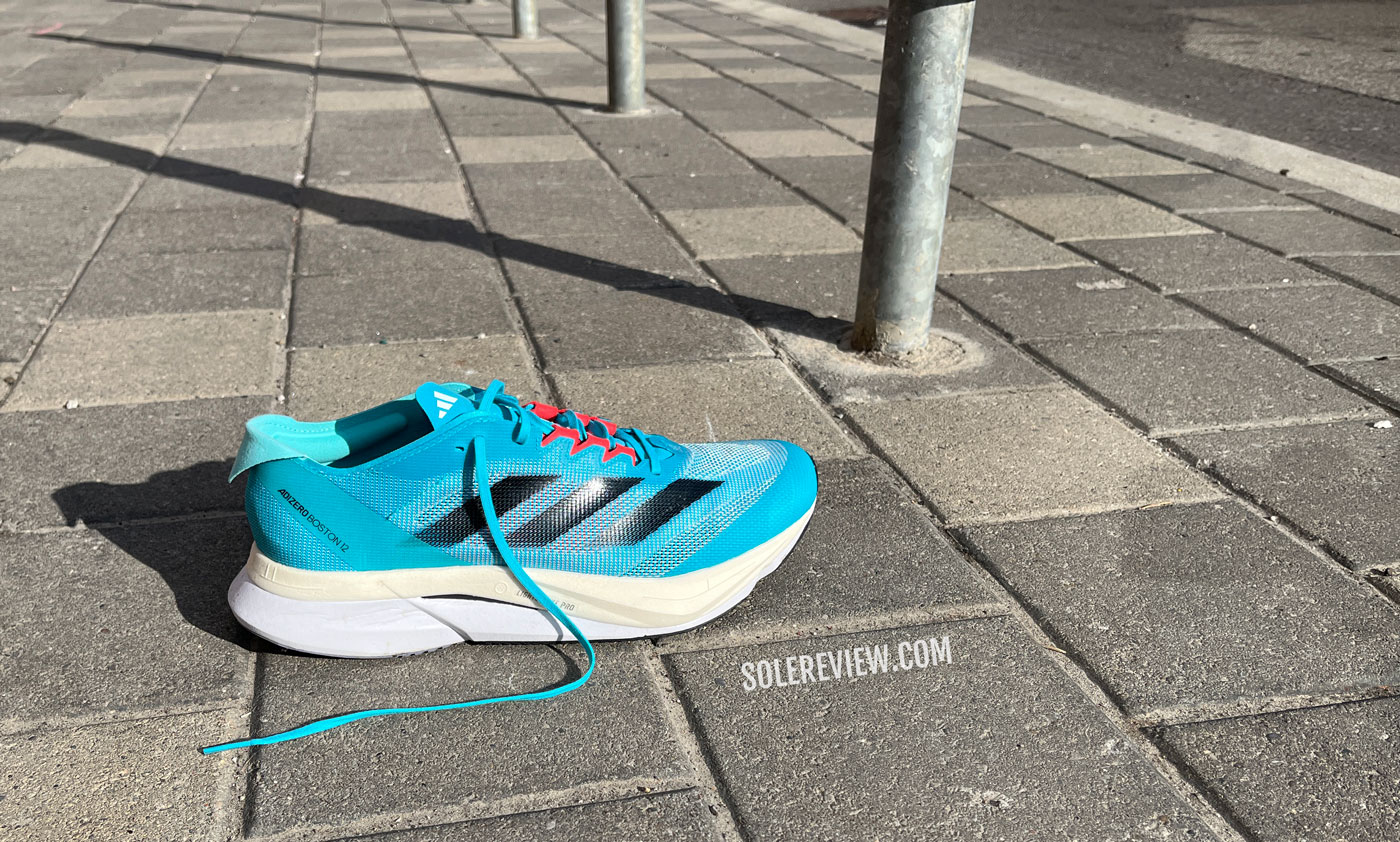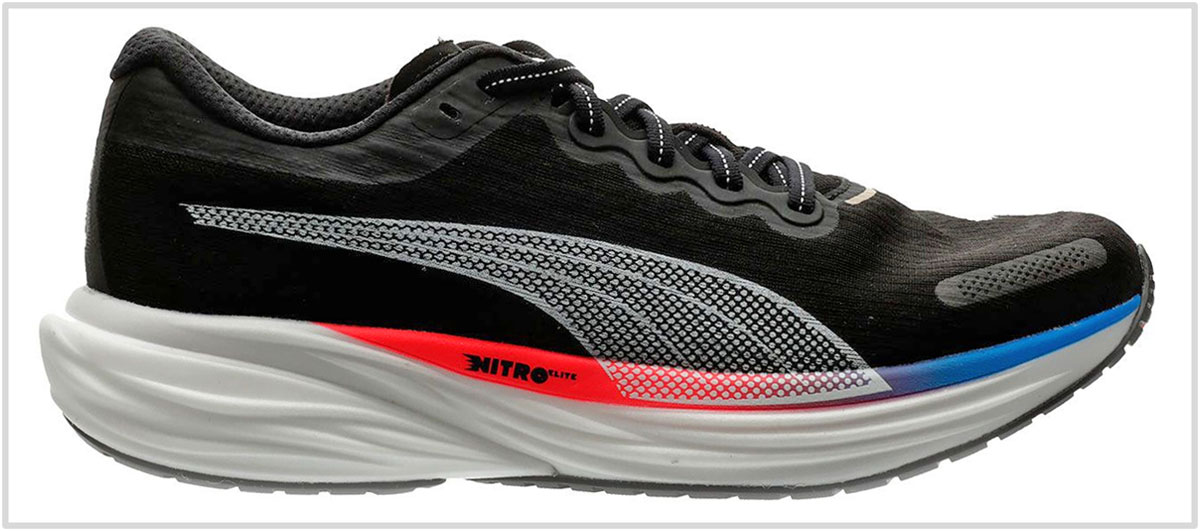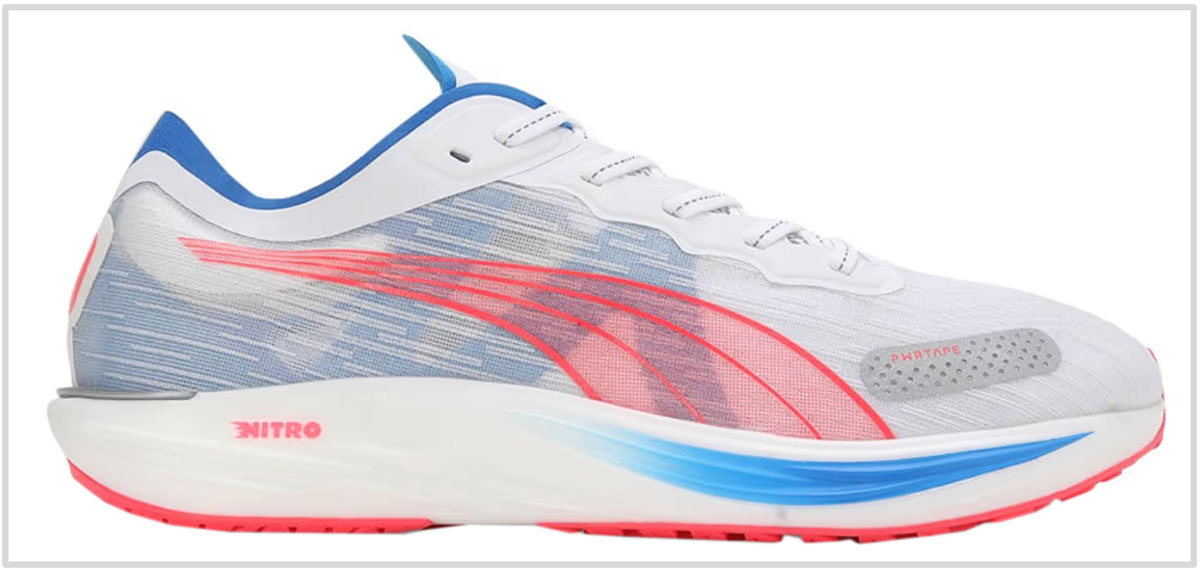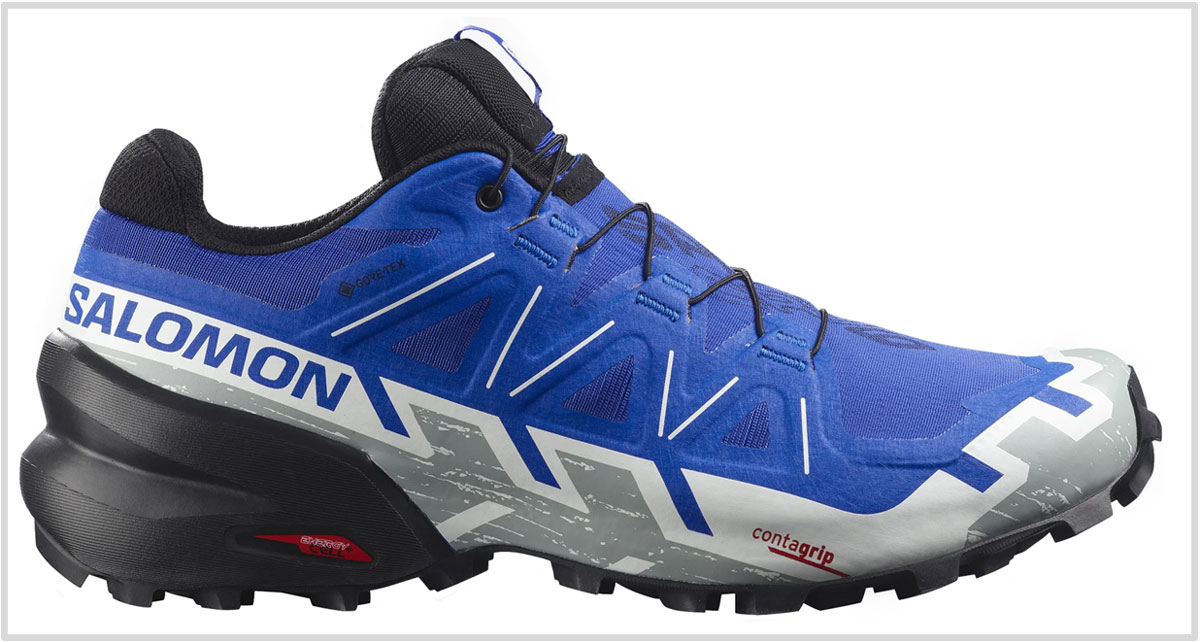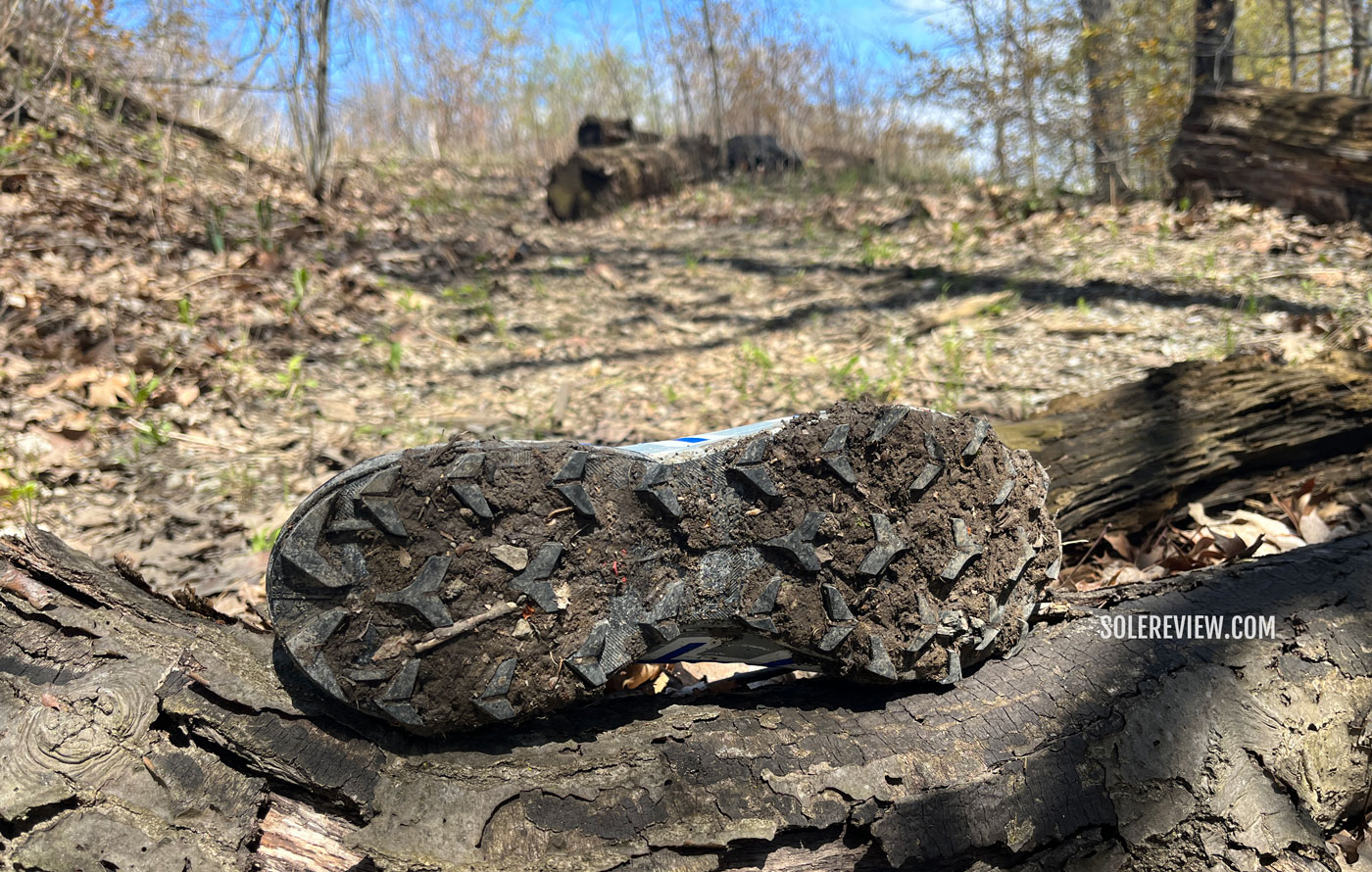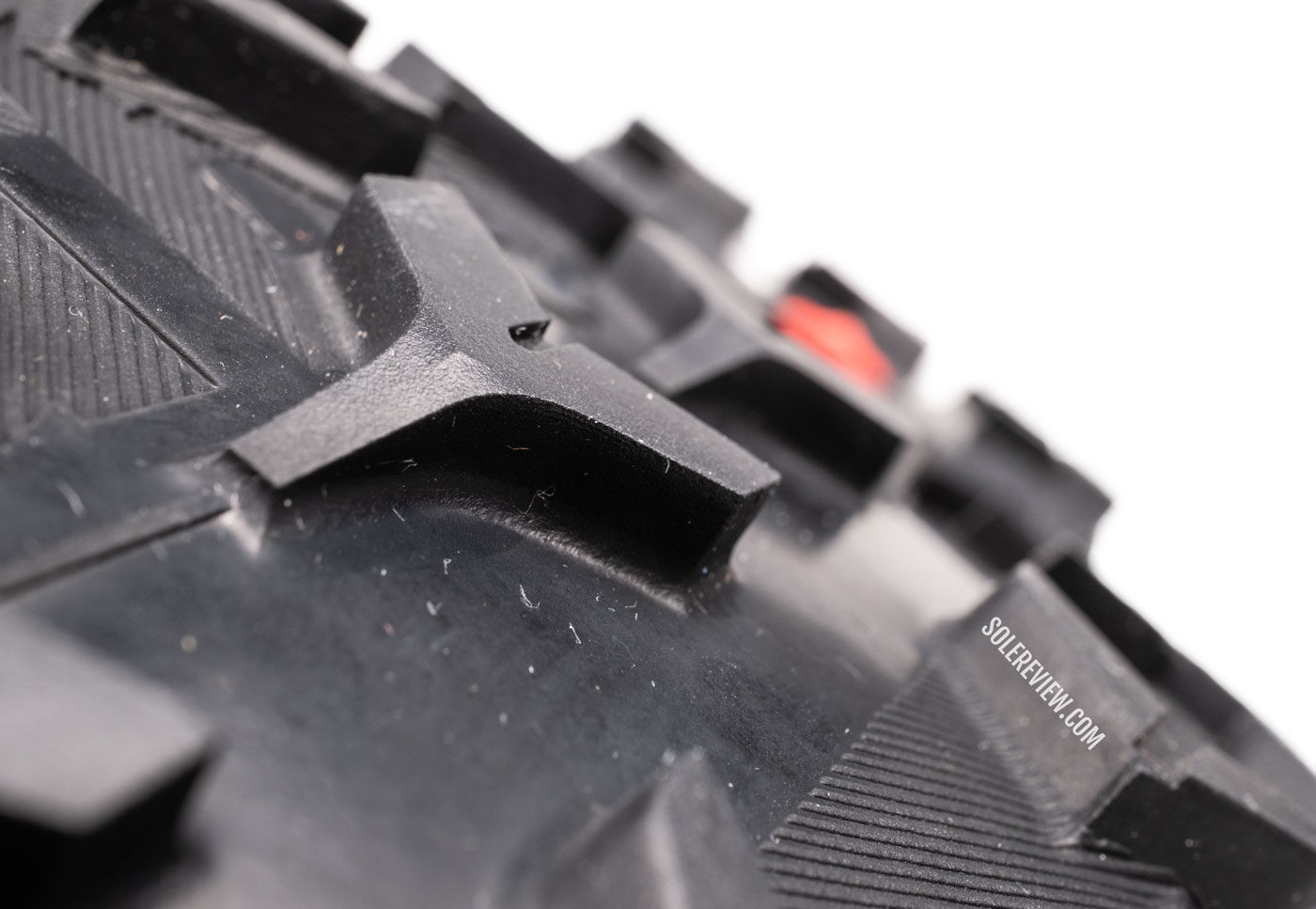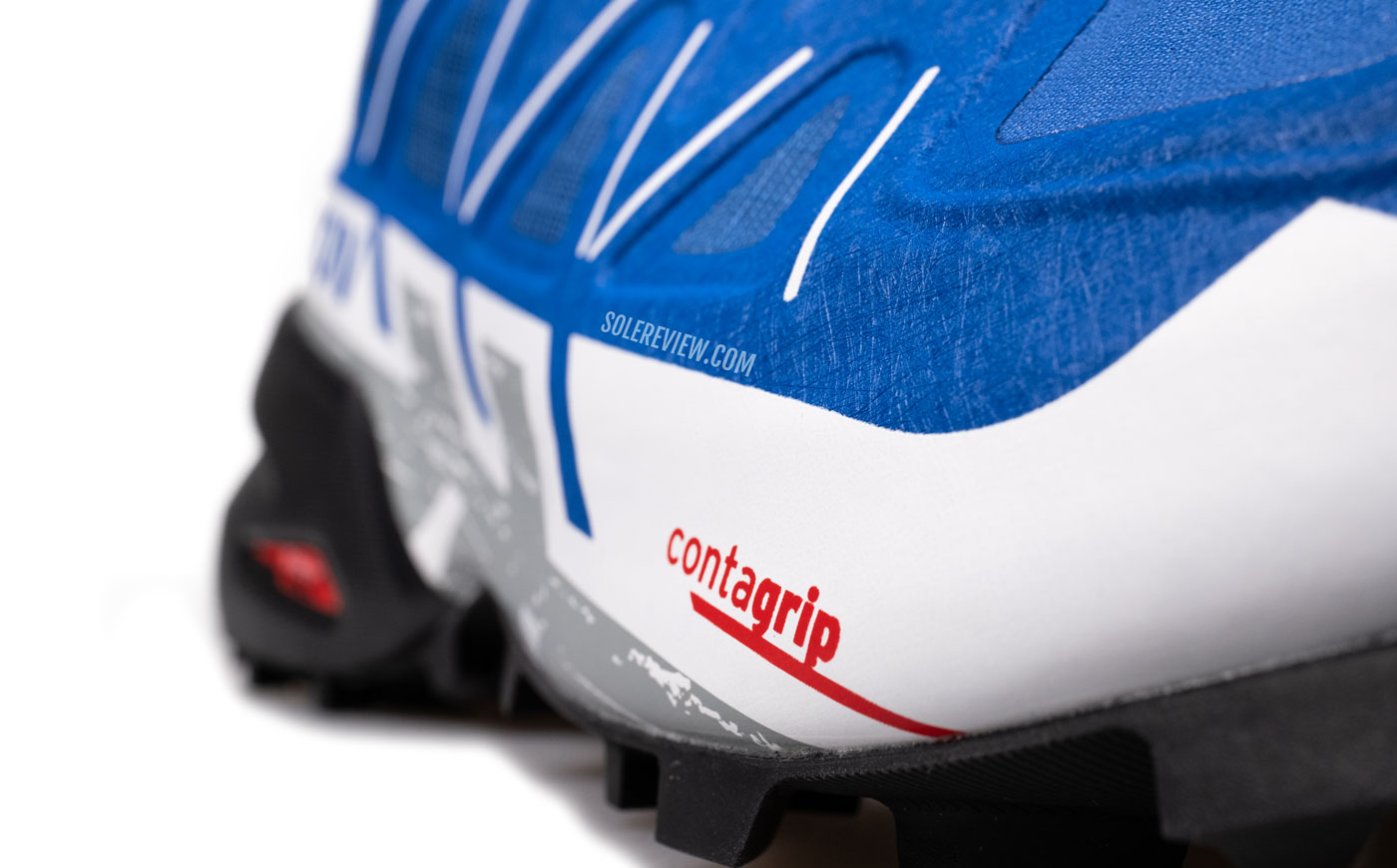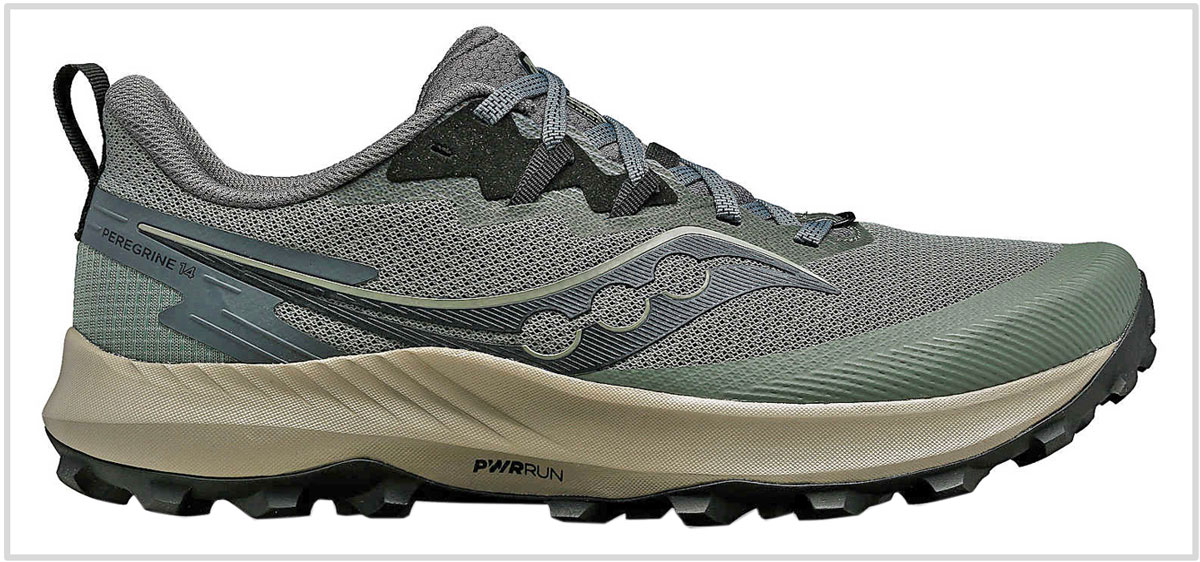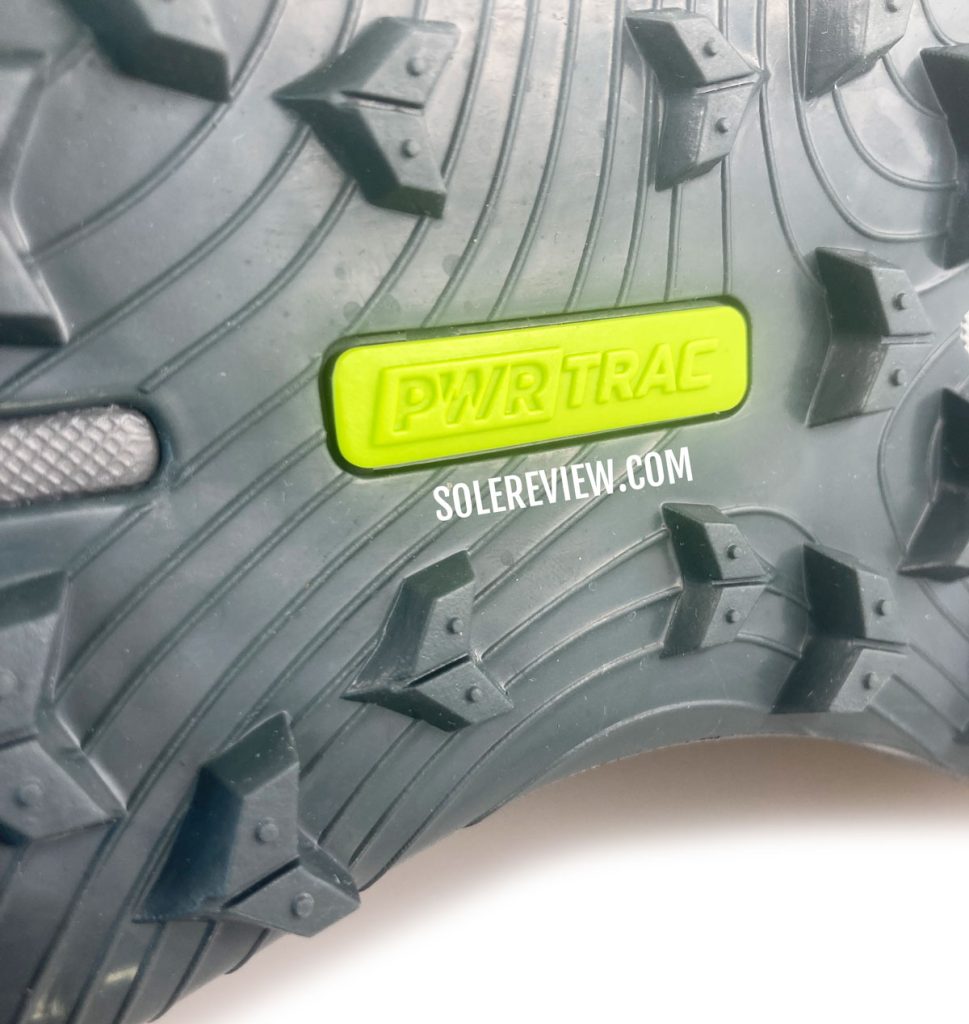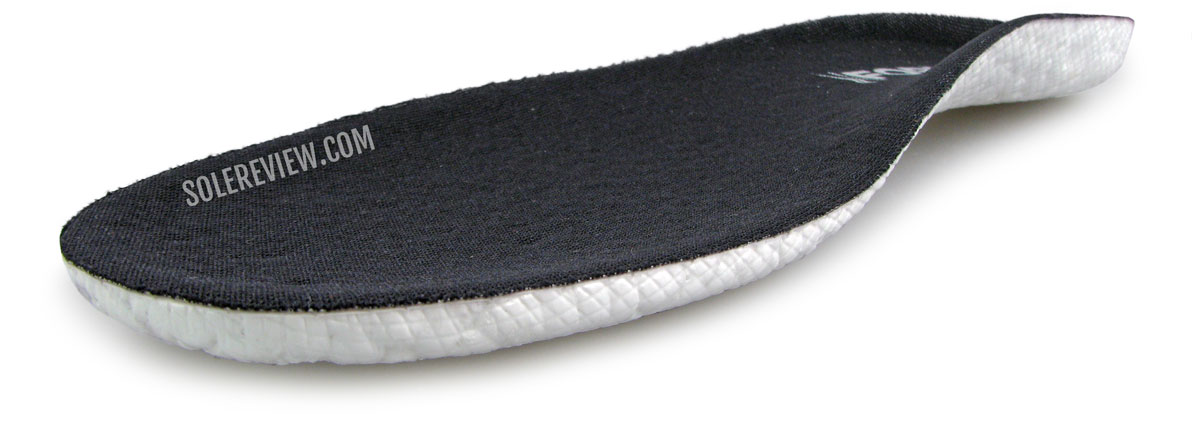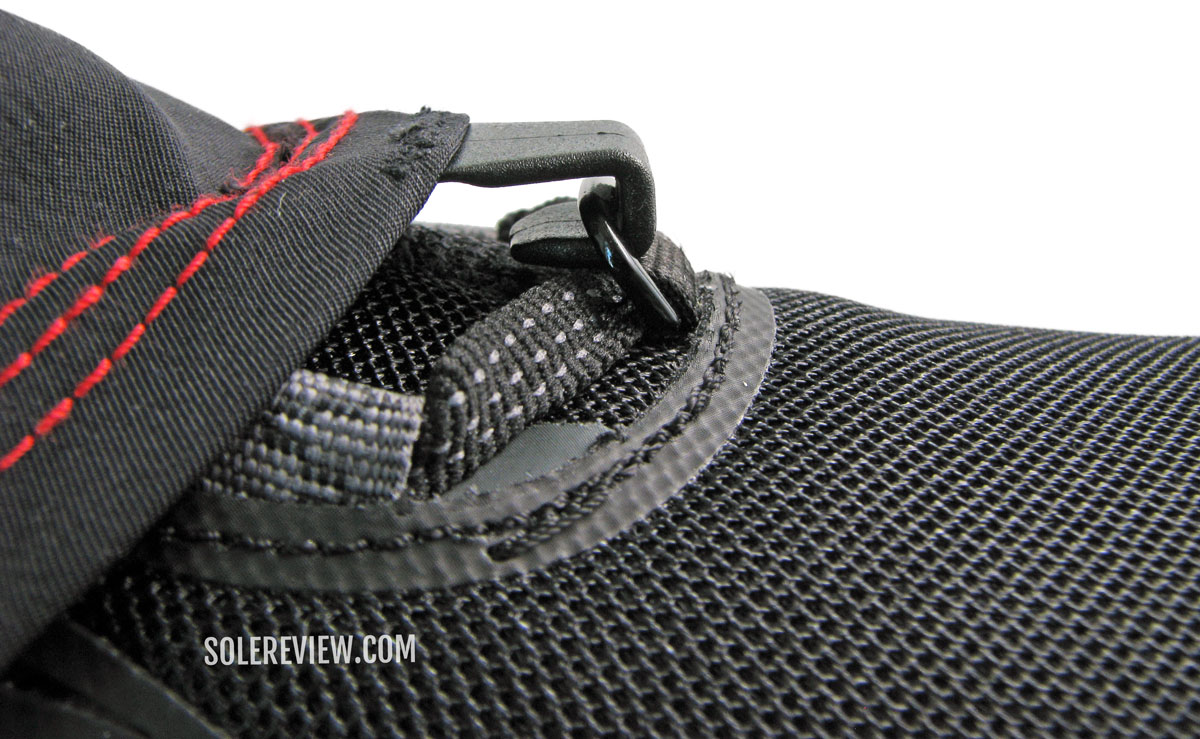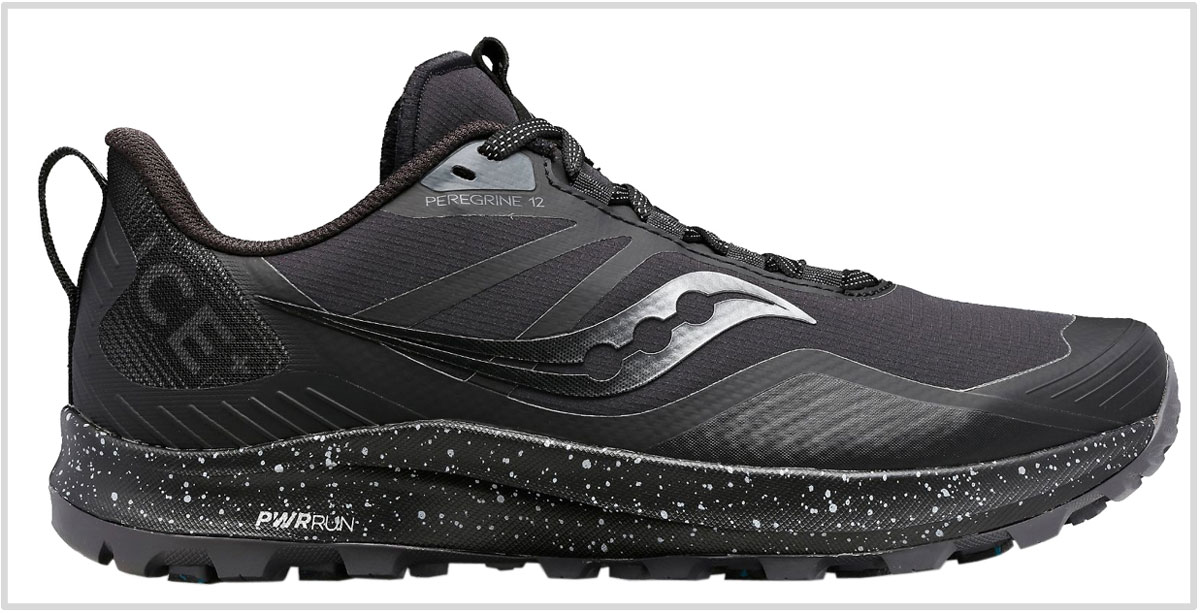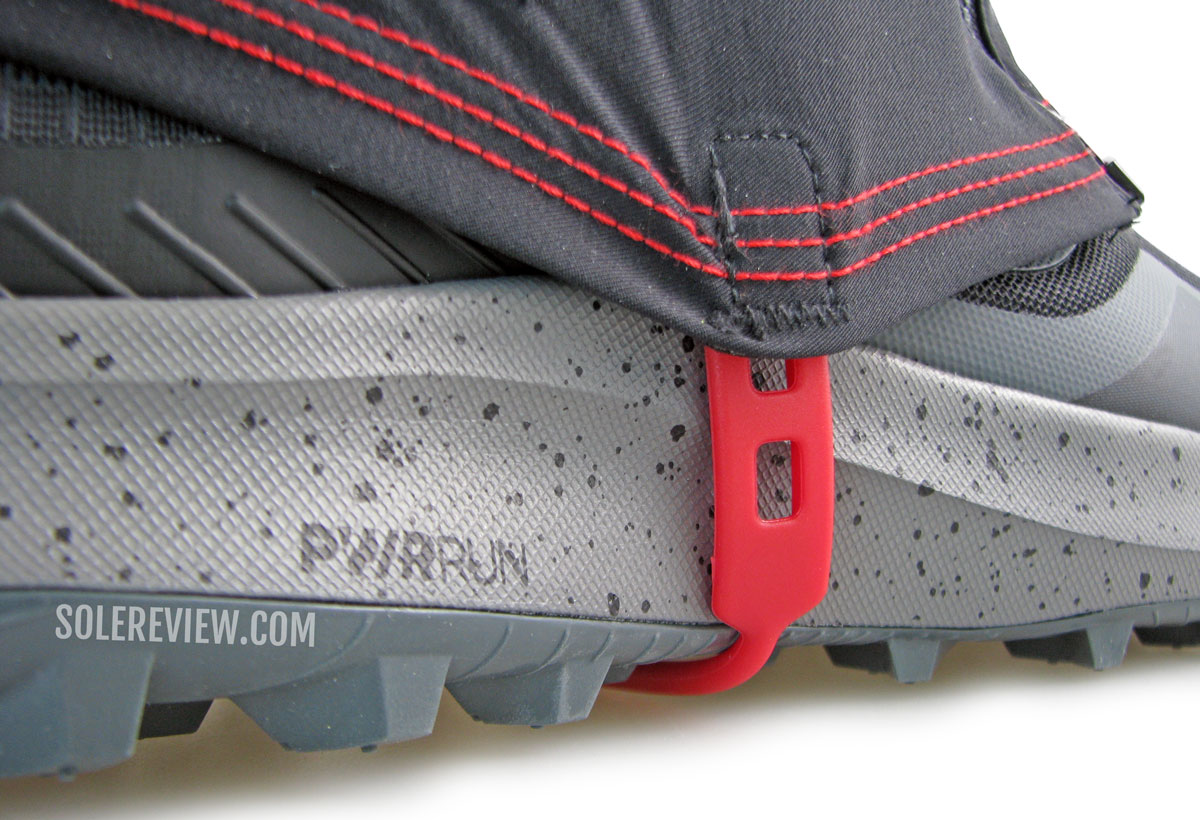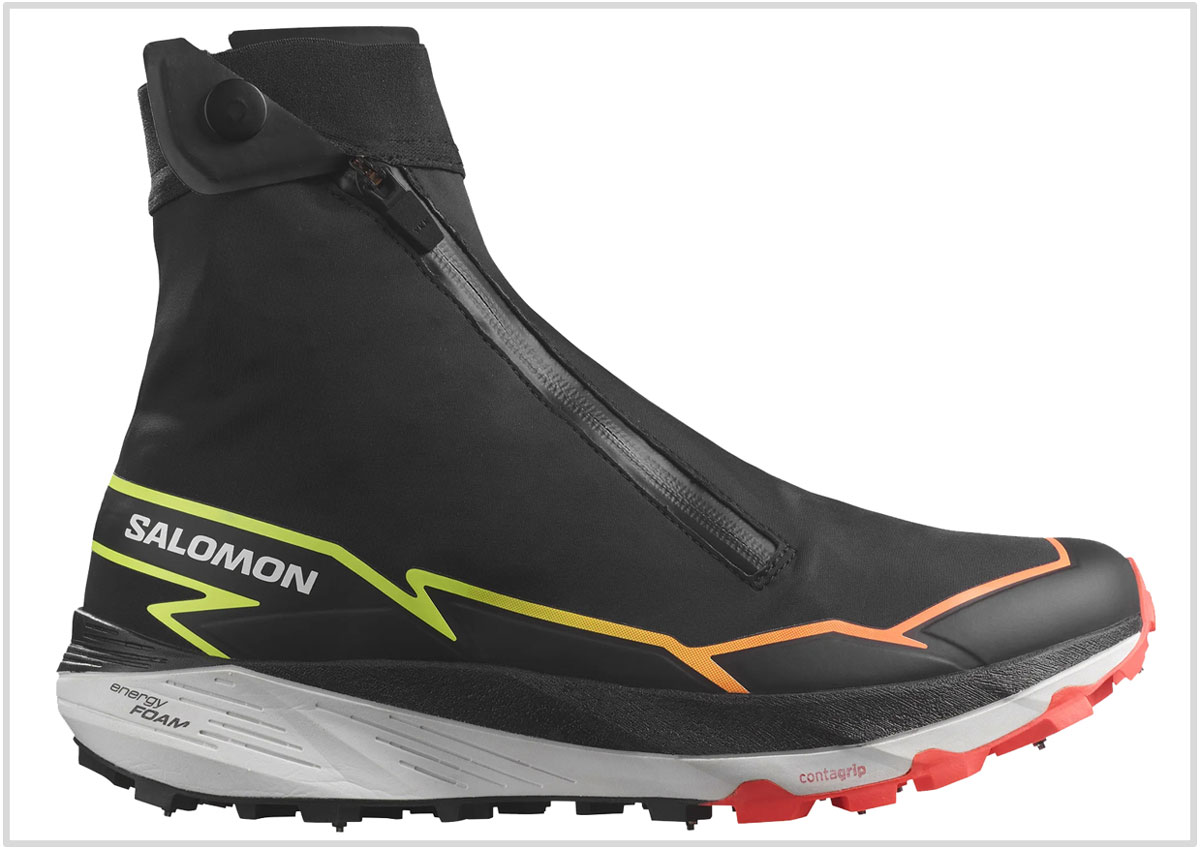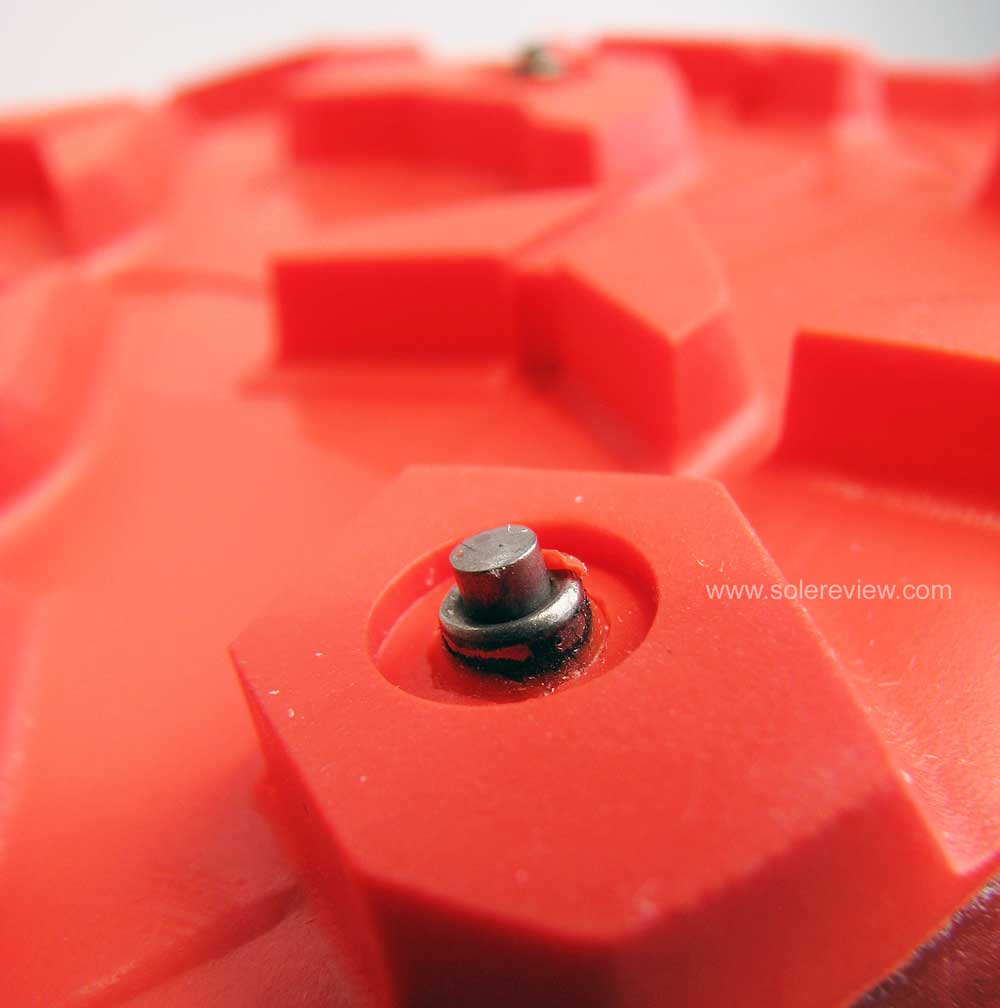This article has been updated with current models for February 2024. Most of the shoes in this guide have been replaced with their updated versions.
In this product guide:
- 1. Factors to consider
- 2. Versatile cushioned trainer: Puma Magnify Nitro 2
- 3. Traditional neutral trainer: Brooks Ghost 15
- 4. Everyday stability trainer: Brooks Adrenaline GTS 23
- 5. Everyday winter running shoe: Nike Pegasus 39 Shield
- 6. Versatile tempo trainer: adidas Boston 12
- 7. Plated everyday trainer: Puma Deviate Nitro 2
- 8. 5K, 10K racer: Puma Liberate Nitro
- 9. Versatile trail runner with wet/dry traction: Salomon Speedcross 6
- 10. Tempo trail runner with wet/dry traction: Saucony Peregrine 14
- 11. Versatile winter running shoe with grip on wet and slush: Saucony Peregrine ICE V3
- 12. Versatile winter running shoe with snow and ice grip: Salomon Winter Cross Spike
The outsole can make or break a running shoe. No amount of midsole cushioning or springy responsiveness can salvage a running shoe that grips poorly.
An outsole doesn’t stop at just providing traction; it adds value in other ways. A well-designed outsole works together with the midsole to improve the quality of cushioning and transitions.
Depending on the material and geometry, the outsole also acts as a defensive layer against the small rocks and debris on the road and trail. Some brands use a (more) durable compound to deliver more miles per dollar spent.
This guide is about shoes with excellent outsole traction, so what are we looking for here?
Looking back at over a decade of testing running shoes, a combination of two factors decides how good or bad the outsole grip will be.
THE OUTSOLE MATERIAL
An automobile tire is a classic example of how various rubber compounds take surface characteristics into account.
Firmer summer tires work on dry roads while a grippier and softer rubber is used for winter driving. Off-road motorcycles have knobby tires with aggressive lugs for grip over loose soil and gravel.
Running shoe outsoles work similarly. As a general rule, softer rubber lugs or sticky compounds deliver better grip than harder outsoles. That’s one of the reasons why Brooks models are a part of this guide – their softer outsoles offer plenty of road grip.
Brands also offer specific rubber compounds designed to grip better.
They go by different marketing names like adidas Continental, Asics Wetgrip, New Balance AT Hydrohesion, Salomon Contagrip, or Altra MaxTrac. The Saucony PwrTrac is another tacky rubber material.
Pumagrip outsoles have built quite a reputation in a very short period, so this buyer’s guide has three different Puma running shoes.
So far, we’ve assumed that the outsoles are made of rubber. But what if the shoe lacks a separate outsole or has limited rubber coverage?
Foam outsoles deliver adequate grip on dry/wet roads and clean sidewalks. But throw in some slush, and the traction level decreases drastically. Likewise for smooth artificial floors that are dusty or freshly waxed.
EVA foam outsoles also stiffen in the cold, thus reducing their traction.
Related read: The best running shoes for wintery conditions – including snow and ice.
THE OUTSOLE GEOMETRY
The geometry also influences the level of traction – or the lack thereof. Smaller and deeper lugs generally grip better than flat slabs – even if they are made of the same compound.
However, using a high-tech rubber compound on a flat geometry works just as well. The adidas adios 8 and Boston 12 are good examples.
The outsole articulation or grooving also plays a role. A geometry that divides the outsole into separate sections lets them operate semi-independently. This way, targeted traction is available where and when necessary.
Trail outsoles aren’t built the same way as road shoes. While a higher count of longer lugs is preferred, these need to be spaced wider to minimize clogging.
Some geometries are also optimized for both downhill and uphill traction. For instance, the forefoot lugs could be angled forward and downwards whereas the rear does the opposite.
Also, trail running shoes need to perform equally well on wet and dry terrain. This means that the rubber compound needs to deliver reliable performance under ever-changing surface conditions.
The following list of shoes is grouped by their use cases.
Category 1: Everyday trainers
1) Versatile daily trainer: Puma Magnify Nitro 2
Here’s a running shoe from another German brand with its outsole game on point. The Pumagrip compound has quickly become a crowd favorite because of its excellent traction.
On the Magnify Nitro 2, the four-piece Pumagrip provides reliable traction where it’s needed the most. The heel area has a couple of lugs, including a rounded outer outsole for heel strikes. The forefoot has densely packed lugs covering most of the contact surface.
But the outsole grip is not the only reason why the Magnify Nitro 2 is featured here. The Magnify’s highly cushioned Nitro foam midsole makes it excellent for everyday runs and long-distance training. The soft and secure knit upper complements the midsole by making the power delivery efficient.
Given its stack heights (39 mm rear and 29 mm front), the Magnify doesn’t do so well for higher speed runs. But then, there’s the Liberate and Velocity Nitro to cover that.
2) Traditional daily trainer: Brooks Ghost 15
Two factors give most Brooks running shoes an edge in the traction department. The forefoot outsole uses soft blown rubber that’s molded into small lugs for optimal grip over most running surfaces.
That’s true for the Ghost 15 as well. The flex grooves also allow the outsole sections to work independently of one other, and their ‘pistoning’ effect (compressing into the midsole) also helps grip better.
The outsole grip isn’t the only reason to buy a Ghost 15. This Brooks model is very popular for a reason; the cushioned midsole has enough versatility with a do-everything character, and the plush upper is the icing on the cake.
That said, don’t expect sparks to fly. The Ghost 15 is as Vanilla as it gets; our detailed review explains why.
Also see: The Brooks Glycerin 21.
3) Daily stability trainer: Brooks Adrenaline GTS 23
With its firmer outsole and ‘Guiderails’, the Adrenaline GTS 23 is the stability version of the Ghost 15. But take that with a grain of salt, as the raised ‘Guiderails’ on the midsole only make a minor difference to the overall stability.
More often than not, ‘stability’ running shoes are a matter of personal preference rather than actual performance benefit.
Most of the Adrenaline GTS 23’s outsole is made of a soft rubber that grips very well under most everyday conditions, including rained-on roads. It also helps that the outsole geometry and pronounced rubber lugs maximizes the contact area.
The rest of the shoe is quintessential Brooks. The spacer mesh upper is soft, comfortable, and smooth with a true-to-size fit profile. The midsole is cushioned enough for long-distance runs and tame enough for daily runs. Like the Ghost, it’s not exciting nor particularly great at higher speeds.
4) Daily winter trainer: Nike Pegasus 39 Shield
The Shield variant is a winterized Pegasus that not only features a water-repellent and insulated upper, but also has an outsole with a superior grip.
The Pegasus 39 Shield uses a ‘Storm-Tread’ outsole geometry that uses small grooves made of a tacky rubber compound. While it’s no match for hardened ice, it performs very well on wet roads.
From an outsole grip viewpoint, the Pegasus 39 is similar to the Pegasus 38 Shield – a shoe that we reviewed here.
The Shield version of the Pegasus 40 hasn’t been released yet, so watch this space.
Category 2: Road racers and speed trainers
5) Versatile tempo trainer: adidas adizero Boston 12
The adidas adizero Boston 12 is no longer the low-profile tempo trainer from the past. The midsole is now cushioned enough to be an everyday trainer, and even the upper fit has become much roomier. Our full review is here.
Naturally, that changes the Boston’s character and place in the running shoe ecosystem. A few things make it suitable for tempo runs and half-marathons.
The dual-density midsole places Lightstrike Pro foam under the forefoot to deliver responsiveness where it’s most useful. Also, the fork-like prongs of the ‘Energy Rods’ help guide the foot through push-offs without being overly controlling.
Finally, the grip is excellent under the forefoot and heel. The Continental rubber outsole is wider than before, and provides dependable traction – be it on dry or wet surfaces.
Also consider: Puma Velocity Nitro 3.
6) Plated tempo trainer: Puma Deviate Nitro 2
Not many plated running shoes can take the abuse from everyday training and yet be ready for a half-marathon when the occasion demands.
That can be attributed to the Puma Deviate Nitro 2’s rather unusual design.
The Deviate Nitro lacks an aggressive rocker profile, nor does it have the minimalist design language of most running shoes with a plate. It’s built like a standard daily trainer, except that there’s a plate inside the dual-density midsole. The Deviate combines the Nitro Elite foam with Nitro foam to balance midsole softness with supportive firmness.
It would help to temper expectations here, as the Deviate Nitro 2 isn’t a true speed shoe nor a marathon racer. It doesn’t have the noticeable ‘roll forward’ effect that most runners have come to expect from plated midsole. That being said, there’s plenty of cushioning for even a marathon, whereas the robust build quality makes it durable enough for daily use.
A full rubber outsole made of Puma Grip is a part of that package. The teardrop-shaped lugs under the forefoot have excellent road bite on both wet and dry roads.
7) 5K, 10K racer: Puma Liberate Nitro 2
The Puma Liberate Nitro 2 reminds us of the Nike Lunaracer and Lunartempo. They were speed running shoes or racers with a minimally designed upper, but without the punishing ride quality of racing flats.
So while the snug upper did its part in keeping the foot locked down during high-speed runs, the midsole cushioning kept the ride harshness at bay.
That’s the kind of shoe the 6.5-ounce Puma Liberate Nitro 2 is. A racer-like upper secures the foot, and a Nitro foam midsole keeps the ride from getting harsh – as long as the races are under 10K.
Puma doesn’t skimp on the outsole, and fits the Liberate Nitro with a 2-piece outsole made of the grippy PumaGrip compound.
Category 3: Trail Running shoes
8) Versatile trail running shoe: Salmon Speedcross 6
The Speedcross 6’s sticky rubber compound offers excellent traction on dry and wet surfaces alike. But there’s more to the Speedcross than just its lug length; our detailed review explained why.
The slim outsole profile distributes the pressure over a smaller area – thus improving the bite on the trail. The midsole is also double-lasted, meaning that the upper wraps the midsole for a superior lock-down.
Lastly, the Quicklace upper secures the foot and keeps it closer to the ground for better power delivery.
9) Trail runner with low drop: Saucony Peregrine 14
Regardless of the annual design refreshes, the Saucony Peregrine 14 hasn’t changed all that much from a few years ago. The ride character is familiar, and so is the 4 mm heel drop.
Besides being an excellent trail running shoe for short and speed runs, the Saucony Peregrine 14 also delivers dependable outsole grip traction. For that, we have the tacky PwrTrac rubber compound and aggressive lug geometry to thank for.
The specially formulated rubber delivers multi-surface traction, and components like the rock plate and firm midsole help connect the foot to the ground.
The firm midsole is supportive, and the rock plate protects the foot from the jabbing roots and rocks. The comfortable upper provides fit security over uneven terrain, and an optional gaiter can be hooked to the D-Ring. Like many other Saucony shoes, the Peregrine also has a thick (removable) insole made of Pwrrun+ foam.
10) Daily winter trainer for slushy conditions: Saucony Peregrine ICE+ V3
We were pretty clear in our detailed review of the original Saucony Peregrine ICE – that his was one of those products where the marketing hype got ahead of itself.
However, we have to give credit where it’s due. The Vibram Arctic Grip delivers phenomenal traction over wet, but non-frozen surfaces. The sandpaper-like texture of this special rubber compound delivers confidence-inspiring traction over otherwise slippery surfaces.
The firm midsole has a comfortable and supportive ride, and the closed mesh upper does a decent job of repelling moisture. The Peregrine ICE V3’s upper design is fairly similar to the standard Peregrine 12, and it also uses the same midsole and insole as the Peregrine 12.
11) Best for grip on ice: Salomon Wintercross Spike
The Salomon Wintercross Spike is the nuclear option for winter running when all other alternatives have failed.
Not only does the outsole have 5 mm rubber lugs for grip on slush, but it also has 11 Carbide spikes for the ultimate in winter-ready traction.
These spikes bite into frozen surfaces where ordinary rubber cannot, thus vastly improving safety when the pavement is either snow, ice, or both.
There’s also a waterproof upper and a comfortable midsole that goes on top of the spiked outsole, so this is a complete package. While it’s not as good as the Snowspike CSWP, it’s the best of the current lot.
Also, don’t confuse the Winter Cross with the Snowcross – the latter is a lifestyle sneaker with limited utility on icy surfaces.
Do you own any of these shoes? Improve this review by sharing your insights – submit a review here.

